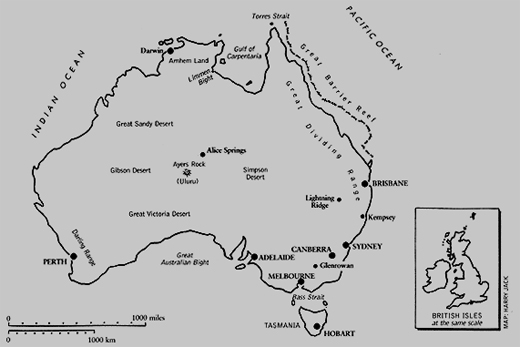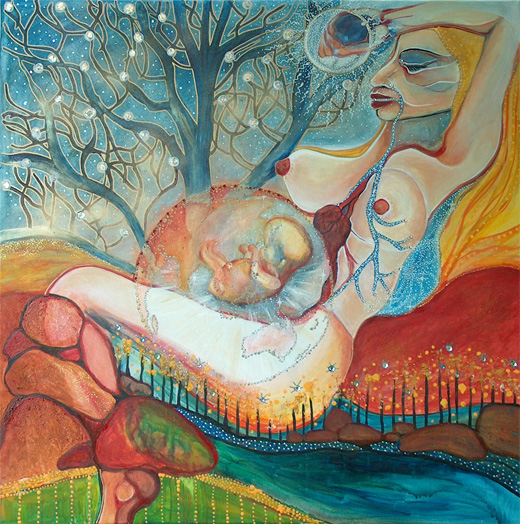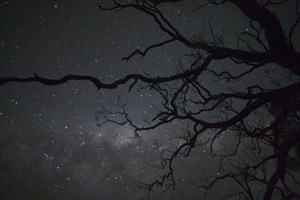|
With a duration of around nine minutes, the first
movement is a soundscape based on nature.
As the poem suggests, “The Breath of Life” illustrates
one long interconnected breath that sustains all living things. All
nature shares the one source of life, as if there were an invisible
thread connecting us all.
The magic twinkling of the rainstick, like an awakening of the day,
opens Winanga-li symbolising this continuous cycle of life.
To love Australia is to love nature.
Nature in
Australia is all encompassing.
Insects run wild in the thousands.
The sun is often overbearing. Dust flies in your face. Flies crawl
over your skin. Birdcalls cry out day and night. Water is a precious
commodity. Bush fires are a common
threat. Some of the wild animals are life threatening. Mosquitoes,
ants, spiders, flies, prickles, wind and sunburn cause frequent
irritations to the skin. Wrinkles form prematurely! However we
Australians don’t seem to mind all this. These things remind us we are
alive. To block out these elements would be to disconnect ourselves
from
the true essence of life.
When Ann Pattel-Gray wrote the following passage in
‘Through Aboriginal Eyes’, I believe she was not only representing the
ways of the Australian Aborigines, but also an attitude most
Australians have adopted for their own. Perhaps some would say this
comes from just not minding getting dirty!, but I believe there is a
stronger meaning in the fact that the average Australian would prefer
to lounge on the grass than sit upright in a chair…
“We love the earth and all things of the earth. Aboriginal people come
literally to love the soil, and we sit or recline on the ground with a
feeling of being close to a mothering power…
In our view the earth is sacred.
It is a living entity in which other living things have origin and
destiny.”
The Australian landscape is so vast and yet, for the
European way of life modern Australians have adopted, it is so
limited. Ninety percent of the population lives on the coastal rim
and, for the most part, on the East Coast. That leaves a huge mass of
untamed, wild land at the heart of the country. These wide-open spaces
have effect on the psychology of the Australian residents. They have a
sense of freedom that residents of smaller encaged countries do not.

The land and its indigenes are still the most
impressive, most distinctive features of Australia. No architecture,
no monument, not even the casual and liberal lifestyle many
Australians revel in, holds any kind of spark to the grandeur of the
land itself. Everything is overshadowed by the pure silence of the
interior. The silhouette of Uluru is simply the king of all landmarks.
No man-made structure could come close to its awesome presence. One
reason Australians are so preoccupied with and hold a deep love for
the land is that it is the biggest thing in their lives. They hold a
sort of reverence for it, born from a little fear, and a lot of
respect.
The
diversity of the Australian landscape is captivating. From rough ocean
shores to coral reefs, rainforests to high snowy
mountain peaks, dry woodlands to green pastoral lands, sandy deserts
to rocky outcrops, misty valleys to dusty red plains, and above it all
purple-tinged clouds and endless starry night skies. The sheer
magnitude of the
landscape makes our pulse race. It is a majestic timeless land. It has
both a power and a grace that reminds us just how small and
insignificant we really are. And yet it reminds us of our roots, of
the basic existence of our lives and in this sense empowers us,
bringing us back to the purity of just living. To the love of all
nature and of our mother earth. To the breath of life. |

 ©2004
©2004

